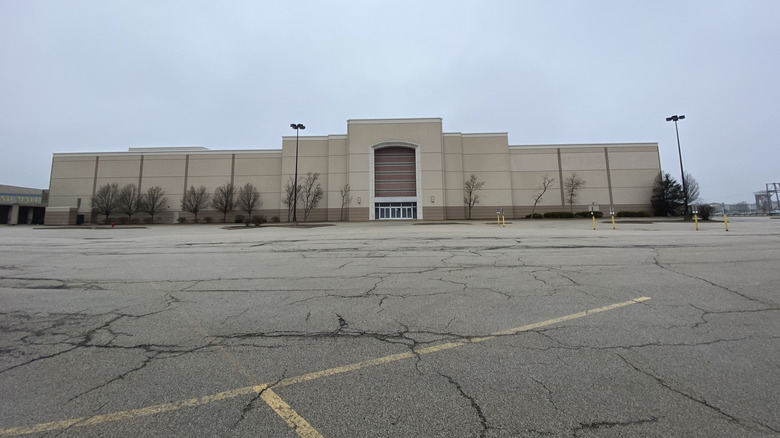The Answer To The Housing Crisis Might Be In Your Local Abandoned Mall
Despite an increase in home construction in recent years, the U.S. has a chronic shortage of homes available. In fact, according to data compiled by Zillow, there was a growing shortage of 4.5 million homes nationwide in 2022. The problem is even greater in large cities and metropolitan areas, where affordability is also lacking. As such, there's also a trend of people moving to affordable housing across the country. To combat the widespread issues causing the housing crisis, local officials and developers are trying to get creative in how they can not only provide affordable homes, but do so quickly. One possible solution is to convert abandoned shopping malls into homes.
There are a few key benefits of turning abandoned malls into homes. For one, the infrastructure and surrounding land is already in existence, so developers can possibly save time and money depending on the state of the current structure. Utilizing what's already there can also help provide people with homes quickly. Also, abandoned malls are typically located in central locations, which can provide access to other amenities for people who might live in converted units. Many malls also come with ample street-level parking or parking garages, which can make the process of converting these large buildings into homes much more seamless. Furthermore, converting abandoned buildings like shopping malls addresses a growing problem of retail spaces sitting empty.
How malls are being converted into affordable homes
While abandoned malls might be increasingly converted into affordable homes, this doesn't necessarily mean there's no access to shopping. Developers are concentrating on mixed-use development communities, which consist of home units blended with shops, restaurants, entertainment venues, and even offices. Aside from better use of old space, this can also increase accessibility to a variety of venues, particularly in areas with many residents lacking personal vehicles or adequate access to public transportation. Some communities even have thriving green spaces added within these former shopping malls to provide a neighborhood-like atmosphere.
Despite all of their potential benefits of adding affordable housing and revitalizing communities impacted by closed-down malls, there's also some caveats to converting shuttered shopping centers into homes. First, not all defunct malls can be rezoned into housing. This can be due to a variety of reasons, including safety, local ordinances, and even resistance from area residents. Architectural and interior designing can also be challenges, depending on the space at hand.
Converting these spaces into viable apartment homes can involve ensuring a potential home has proper ventilation, as well as adding windows, plumbing, and electrical components. All of these could end up costing developers more than if they were to start building from scratch. Another downside might be the novelty of the idea, as not everyone might desire to live in a mixed-use development. Nevertheless, this housing trend continues to gain popularity, and areas across the U.S. are likely to see more malls converted into homes than not as developers get creative with ideas for affordable home building.

